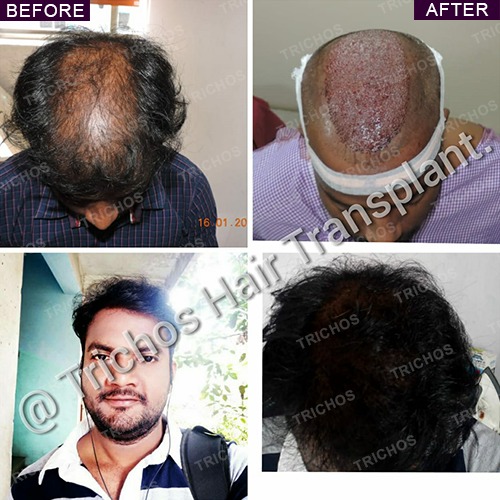Lower Vs Natural Hairline
Due to the impact of social media, hair transplant experts keep facing unusual requests from patients. One of such unusual requests is a preference for setting a lower hairline marking irrespective of their age.
But, are they really good? Should you opt for such a design if a hair transplant clinic offers you such a choice? Will the lower hairline design do not look odd and stay that way for the rest of their life?
In this educational video, renowned trichologist, dermatologist and one of the top hair transplant experts in Hyderabad Dr John Watts explain the rationale behind going for natural hairline as against lower hairline design for hair transplants.
Three Case Scenarios
In layman’s language, Dr John Watts cites three case scenarios of three patients in the age groups of 20 years, 27 years and 40 years and how irrational a lower hairline design might bring in the long run for each one of them if they deliberately avoid a natural hairline look.
“It is your hair transplant surgeon who should take a call as to what kind of hairline would fit you. The problem occurs when patients come with their own set of requests by bringing photographs of edited photographs of models they found on social media,” answers Dr John.
In his video presentation, Dr John Watts explains that various factors must be kept in mind when designing a hairline. The current age of the patient and how a mature hairline would look like when a patient reaches a certain age have to be considered while designing a hairline.
Unnatural hairline: Consequences
There are instances where one hair transplant clinic might agree to a patient’s request for a lower hairline marking, while those who are honest to their professionalism may discourage such patients from going ahead with unnatural hairline marking.
“If a patient does not qualify for a certain hairline design based on the well-established criteria, I usually discourage them,” informs Dr John.
In detail, Dr John Watts explains the adverse consequences of designing an unnatural hairline without considering important factors like how it may appear when they grow a little older.
What makes an unnatural lower hairline design tricky is when a patient realises after 4-5 years of a hair transplant that they start feeling very awkward and start wearing caps or feel like shaving their head.
“Many times, lower hairline design exposes gaps of baldness when they start ageing as hair thinning or baldness may occur in some spots. The right approach is to incorporate the features of a mature hairline design given the age of the patient,” explains Dr John Watts.
What may compound the issue further is when there is no donor hair left on the scalp of the patient as all the hair grafts might have been exhausted from the donor region already.
This is where it is logical and rational if patients always insist on natural hairline marking that stays the rest of their life without feeling awkward later on. Every hairline design must look realistic and it would be odd for one to have a very lower hairline design of a 20-year-old when one is around 40-45.
Not surprisingly, such bad decisions can push patients into depression.
In his concluding remark, Dr John Watts urges the viewers to share the video among their friends and requests them to leave their feedback in the comments section.
Trichos provides premium solutions for different hair loss causes including state-of-the-art hair transplant services in Hyderabad. Reach us for more information!
Book an appointment for expert guidance


About
Causes
Alopecia
Restoration
Procedures
Locations
Disclaimer: While hair transplants are generally safe and effective, as with any medical procedure, there can be minimal and temporary side effects based on specific or underlying medical condition of the individual patient. Please consult in person with our qualified medical team at Trichos for a thorough assessment of your specific condition and individualized guidance on the potential risks and benefits associated with our hair restoration treatments.
Learn more about Medical Consent for Surgeries.



